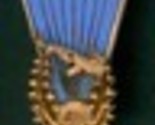Rendered at 02:37:41 08/27/25
TYPE IV, DDR, PARA WING, EAST GERMANY, WITH #1000 JUMP HANGER, B&T 744
$652.40 MXN
Los buques de
United States

Las opciones de envío
Los buques de 1 business day Detalles
No hay precio de envío se especifica en MX
Los buques de
United States

La política de devoluciones
Full refund available within 30 days
Detalles
Protección de compra
Opciones de pago
PayPal accepted
PayPal Credit accepted
Venmo accepted
PayPal, MasterCard, Visa, Discover, and American Express accepted
Maestro accepted
Amazon Pay accepted
Nuvei accepted
Las opciones de envío
Los buques de 1 business day Detalles
No hay precio de envío se especifica en MX
Los buques de
United States

La política de devoluciones
Full refund available within 30 days
Detalles
Protección de compra
Opciones de pago
PayPal accepted
PayPal Credit accepted
Venmo accepted
PayPal, MasterCard, Visa, Discover, and American Express accepted
Maestro accepted
Amazon Pay accepted
Nuvei accepted
Rasgos del artículo
| Categoría: | |
|---|---|
| cantidad disponible: |
Sólo uno en stock, para muy pronto |
| Condition: |
Used |
| Country/Region of Manufacture: |
Germany |
| Modification Description: |
None |
| Modified Item: |
No |
| Brand: |
Military |
| Type: |
Parachute |
Detalles del anuncio
| Las políticas del vendedor: | |
|---|---|
| Envío de descuento: |
No ofrece el envío combinado |
| Publicado en venta: |
August 2 |
| Artículo número: |
1762865715 |
Descripción del Artículo
TYPE IV, DDR, PARA WING, EAST GERMANY, WITH #1000 JUMP HANGER, B T 744
This is a vintage and original military issue Parachutist Qualification Badge from East Germany (Deutsche Demokratische Republik - DDR) with a #1000 parachute jump hanger. It has a threaded screw post with dish shaped round spinner on the reverse for retention to the uniform. This Para badge is illustrated in Bragg Turner's first book, Parachute Badges and Insignia of the World, as B T# 744.
This parachute badge is the Type IV "COPPER" which does not have the red background behind the national symbol.
Collector's Background:
There were four distinctly different badges using this same basic design.
Type I, considered a prototype, was made of silver metal and had the older black, red and yellow diamond shaped National Symbol at the bottom. The diamond shaped symbol was used on many of the East German air force badges.
Type II parachutist badge was also made of silver metal, but had the round shaped National Symbol with red in the background.
Type III was made entirely of copper with red in the background behind the National Symbol.
Type IV was also made of copper and it did NOT have the red background behind the national symbol.
Numbered
jump hangers, made of copper metal, were awarded in 30 separate
increments from 10 to 6000 to recognize the number of parachute jumps
made by the parachutist.
This badge is from an established collection and is long obsolete and now getting scarce. This badge is from a small select unit of elite paratroopers in a country that ceased to exist over 20 years ago.
Luftsturmregiment
(Air Assault Regiment) Willi Sanger
The NVA introduced a Fallschirmjager
(Paratrooper) battalion in 1962. Designated Fallschirmjagerbattalion-5, this
unit eventually evolved into a 2 battalion, 680-man parachute force known as
Luftsturmregiment-40 (Air Assault Regiment-40) "Willi Sanger". This
was an elite NVA formation noted for it's high level of strike-and-fighting
skill, toughness, motivation, and training.
NVA paratroopers
participated in major Warsaw Pact and NVA exercises like Waffenbrüderschaft 80,
JUG 84, Schild-84, DRUSHBA 86, JUG 87. During the 80's the unit was expanded to
two full air assault battalions (40 and 41) and upon mobilization, plans were
laid for a full brigade staff with support group. On more than one occasion the
fallschirmjagers of "Willi Sanger" were awarded the NVA title
"Best Troop Unit".
Dress and field uniforms
unique to the airborne were developed that readily identified these troops as
members of the DDR's premier combat unit.
Added to your wish list!

- TYPE IV, DDR, PARA WING, EAST GERMANY, WITH #1000 JUMP HANGER, B&T 744
- 1 in stock
- Handling time 1 day.
- Returns/refunds accepted
Get an item reminder
We'll email you a link to your item now and follow up with a single reminder (if you'd like one). That's it! No spam, no hassle.
Already have an account?
Log in and add this item to your wish list.


